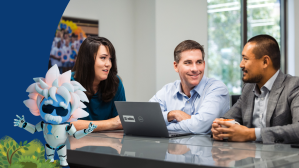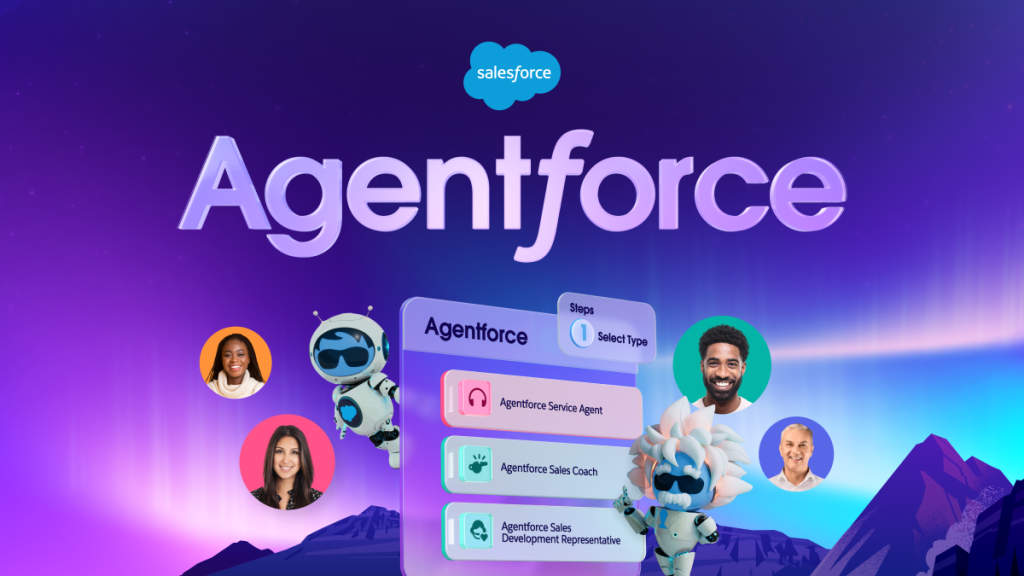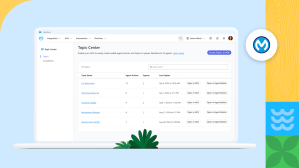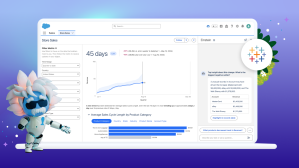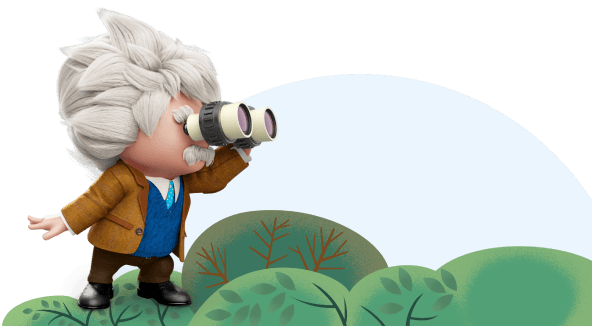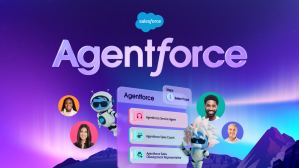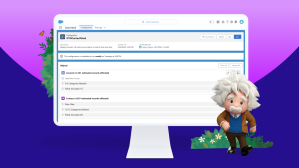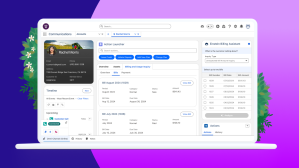Quick take: Salesforce is ushering in the third wave of the AI revolution, helping businesses deploy AI agents alongside human workers across the enterprise. Working together, these customizable agents can autonomously take action on tasks and free up workers to focus on the jobs only they can do.
Every driver knows they should keep their hands on the steering wheel at 10 and 2 o’clock. But as cars have become smarter, autonomous vehicle drivers have — gradually, carefully, and apprehensively — begun to turn control over to their vehicles.
That’s where business is headed with autonomous artificial intelligence (AI), said Clara Shih, CEO of Salesforce AI. With the rise of autonomous AI agents — advanced digital colleagues that can take action without human intervention — that is starting to change.
“In the autonomous driving world,” Shih said, “you have a range of assistance. At level zero, for example, you might have zero assistance. Level one might give you light assistance. And at level five you might have full assistance or autonomy. You can think of autonomous AI for the enterprise in much the same way.”
Waves of autonomy
The AI revolution can be broken down into waves. The first wave is predictive AI where AI models forecast the future based on patterns or historical data. For example, predictive AI can suggest the next best action for a sales professional to take with a prospect based on previous engagement. Such technology is also common in streaming services that monitor subscribers’ viewing habits to recommend other content they might like.
The second wave is generative AI. Powered by large language models (LLMs), which can understand and generate humanlike text, generative AI models can create new content — from marketing copy and campaign images to sales emails and customer service. This wave led to the creation of consumer bots like ChatGPT. While automated in nature, they still require human input, through prompts, to get a job done.
Now, we are entering the third wave where autonomous AI agents, or agentic systems, not only recommend actions but can reason and tackle multi-faceted projects without requiring human oversight at every step.
Unlike traditional chatbots, which can only handle specific queries that have been explicitly programmed into their system and don’t understand context or nuance, AI agents are intelligent and dynamic. Salesforce, for example, has released a series of autonomous AI agents, built on the Salesforce Platform, that interact with LLMs by analyzing the full context of the customer’s message, the customer’s previous interactions and preferences, and then autonomously decide the next actions to take. They use generative AI to create conversational responses — grounded in a company’s owned trusted business data and metadata through Data Cloud — to deliver relevant, contextual, and conversational responses to inquiries. Moreover, they perform tasks proactively while operating within clear guardrails that companies define in Salesforce.
We’re going from content generation and analysis to automating actions.”
Clara Shih, CEO of Salesforce AI
“We’re going from content generation and analysis to automating actions,” Shih said. “In the generative phase, you might ask a copilot to write an email for you to a customer. In the agentic phase, you can ask a harder question: ‘What should I do with all of my customers?’ Maybe it’s email, maybe it’s picking up the phone and calling, maybe it’s sending a text message. That’s really what agents can do: They can take a higher order question, break it down into a series of steps, and then execute each of those steps.”
What will it be like to work with AI agents?
The leap from generative to agentic AI will transform how humans work, said Paula Goldman, Salesforce’s Chief Ethical and Humane Use Officer.
“We’re really at the precipice where AI is becoming increasingly capable, not just of creating content, for example, but of taking action,” she said. “And that is a sea change for how we do work. The opportunities are limitless to make our jobs more fun, more creative, and more productive.”
How? Mick Costigan, VP of Salesforce Futures, a team that explores how technology might shape business and the world, said working alongside AI agents will be akin to having a fleet of interns to assist you.
“Think about having access to an infinite supply of interns who are able to do all those mundane tasks that would take up a lot of your time today, but don’t add a huge amount of value,” Costigan said.
That’s why Agentforce – a set of Salesforce tools for creating and customizing agents that also comes with ready-to-deploy agents — will be so powerful.
Sales and service professionals are among the first to experiment with onboarding AI agents to their teams. In August, Salesforce announced two AI sales agents: Agentforce Sales Development Rep (SDR), which can autonomously engage with inbound leads, and Agentforce Sales Coach, which allows sellers to role-play different sales scenarios with them to uplevel their skills.
Salesforce also launched Agentforce Service Agent in July to help customers across self-service portals and messaging channels 24/7. The agent frees human workers to focus on more strategic priorities, like building customer relationships.
AI agents can offload those basic questions so that every contact center rep can take the time to personally connect with a customer, build a relationship, and play a bigger role in that customer journey.
Clara Shih, CEO of Salesforce AI
“Today, many contact center representatives are told they should try to answer questions as quickly as possible and then move on to the next customer,” Shih said. “That can feel very transactional. AI agents can offload those basic questions so that every contact center rep can take the time to personally connect with a customer, build a relationship, and play a bigger role in that customer journey.”
For Goldman, this is how humans and AI agents can work together rather than in competition.
“It’s really important to think about the role of agents at work as a partnership between people and AI,” she said. “It’s people with AI — it’s not people versus AI. It’s a way of bringing these sorts of complementary skills and intelligence to the table to get even better business outcomes.”
While these agents may be similar to interns for now, their capabilities and foundational knowledge will eventually resemble something closer to a full-time employee.
“Imagine an agent that can learn from you, your past decisions and preferences, so that it can make useful recommendations and decisions,” said Shelby Heinecke, senior AI research manager for Salesforce AI.
AI agents, built on the Salesforce platform
The Salesforce Platform is a key reason why these agents are so unique. Customers have been using the platform to customize and extend core applications for more than 20 years. They’ve created workflows in Flow, written Apex code to create complex logic, and, most recently, built prompts to invoke generative AI. Each of these platform elements are now also the building blocks of agents.
Salesforce Agent Builder uses these building blocks to help customers create and customize agents with low code. These elements give agents new abilities by adding new topics, for example “Order Management,” and giving those topics actions, like “generate a return email.”
“We’ve created over a hundred out-of-the-box, autonomous AI use cases – from service reply recommendations to sales account summaries,” said Shih. “Customers love it because they can take these use cases, customize the last 10%, using no code and really be able to make it their own and deploy it in weeks, not months or years.”
Organizations including Bombardier, Heathrow Airport, and Wyndham are already tapping Salesforce to make the most of their AI investments, and companies like OpenTable are leading the charge in deploying Agentforce.
How to deploy AI agents safely and securely
Despite business eagerness to experiment with and deploy AI, many still worry about how to do so safely. In fact, IT leaders count security as their top concern when implementing AI, according to Salesforce’s AI-IT Demand Gap report.
“The top concerns I hear from customers about AI are about the integrity of their data,” Goldman said. “They want to make sure that their data stays safe, that they know whether it’s being used to train a third-party model or not, that it’s under their control, and they want to make sure they can trust the AI’s output.”
This is partly why Salesforce doesn’t just help businesses find the AI models or build AI actions that best suit their needs, but provides the infrastructure and data security to do so responsibly. The Einstein Trust Layer allows agents to use data and AI in a trusted way, without comprising company data, by defining clear parameters and guardrails for AI agents to follow.
“This is very different from consumer AI in the enterprise,” Shih said. “You have data security, data privacy, company policies, different people have access to different data, and different workflows. Salesforce allows companies to easily specify those guardrails — what’s in or out of scope for each different type of agent, and then to be able to easily monitor and audit that the agent is behaving as expected.
“Agents are very powerful. They require guardrails, and they have to be monitored to make sure that they’re doing what they’re supposed to.”
What’s next for human workers and AI agents?
AI agents are still in their infancy, but Costigan forsees a future where workers won’t be the only ones interacting with AI agents — agents will interact with each other to drive even greater efficiencies.
“Right now we’re seeing little dollops of AI productivity being added to existing processes, but over time what we expect is that work will truly be transformed,” he said. “We’ll have agents monitor each other. We’re already seeing in some of the early research that the ability for agents to work in a network and to have one agent whose job it is to check in on the actions of another agent actually improves the outcomes.”
The ultimate outcome? Ironically, perhaps, Costigan says it’s more humanity.
“Humans with AI can elevate what’s really important to people, which at the end of the day is human relationships,” he said.
More information:
- Discover Agentforce and dive deeper into how it will work
- Learn more about Salesforce AI
- Read about how AI can help us build a more human workplace
